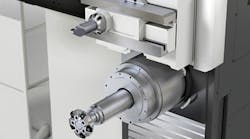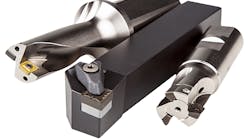U.S. manufacturers consumed $173.64 million worth of cutting tools during April, a decline of 5.75% from the March total and a 15.0% drop from the April 2015 result. The data is drawn from the monthly Cutting Tool Market Report, which tracks consumption of cutting tools by manufacturers — including machine shops, contract manufacturers, and OEMs — as an indicator of overall manufacturing activity.
The April result halted a two-month trend of rising consumption total.
“The cutting tool sector took a step backwards in April after showing some modest improvements over the last few months,” observed Eli Lustgarten, senior vice president at Longbow Securities, a comment cited by the report’s source. “Demand levels continue to reflect a movement to stabilization in a generally weak environment for manufacturing. This reflects the sluggish global economic growth with minimal gains in U.S. industrial production, the strong dollar, weak agriculture, oil and gas activity, and the rising election uncertainty.”
The U.S. Cutting Tool Institute and AMT – the Association for Manufacturing Technology, issue the report jointly, basing it on actual totals reported by companies participating in the CTMR program.
Cutting tools (e.g., drills, countersinks, taps, milling cutters, boring bars, and indexable inserts, among many others) are the high-value consumable parts used in machine tools to shape raw material into finished or semi-finished parts, or to remove excess material from existing parts. Because tools must be replaced relatively frequently during manufacturing processes, the CTMR data can be viewed as an index to overall manufacturing activity, similar to manufacturers’ shipments of durable goods.
By contrast, AMT’s monthly U.S. Machine Tool Orders report, which tracks capital investment in machine tools and similar technologies, and in that way offering a view to future manufacturing activity.
The April CTMR totals bring the 2016 year-to-date total for cutting tool consumption to $689.76 million, and indicates 2016 consumption is down 10.3% versus the four-month total for 2015.
“The cutting tool numbers continue to be negative in scenarios – month-over-month, year-over-year, and year-to-date,” commented USCTI president Steve Stokey. “While there is not much good news on the horizon as we head into the typically soft summer months of the business cycle, there is some optimism with the PMI moving over 50, but there is definitely a sense of caution as we move into the next 90 days.”
Longbow Securities’ Eli Lustgarten offered some support for that view. “Current headwinds are likely to continue in the near-term, with some added pressure from relatively flat automotive demand, material weakening in heavy truck production and ongoing significant weakness in coal mining,” he said. “Despite talks of a possible interest rate increase from the Fed, we expect some modest improvement in the second half of 2016 as U.S. economic growth drives robust consumer spending and housing activity.”











